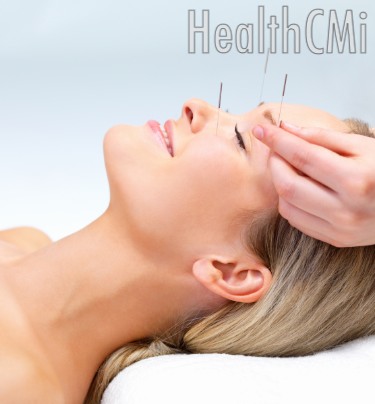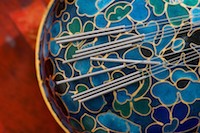Acupuncture is widely used in the treatment for peripheral facial paralysis (FP).  In a recent study, researchers concluded that electroacupuncture and rehabilitation training combined with conventional acupuncture and physiotherapy can significantly improve facial paralysis symptoms in the early stage. The study involved a four week long trial in which patients receiving electroacupuncture and rehabilitation training statistically outperformed those receiving only conventional acupuncture and physiotherapy.
In a recent study, researchers concluded that electroacupuncture and rehabilitation training combined with conventional acupuncture and physiotherapy can significantly improve facial paralysis symptoms in the early stage. The study involved a four week long trial in which patients receiving electroacupuncture and rehabilitation training statistically outperformed those receiving only conventional acupuncture and physiotherapy.
Peripheral facial paralysis is a common condition. The cosmetic drawback for the patient is obvious; the inability to perform normal communication is impaired. Patients are typically under great psychological stress in addition to their physical limitations due to this condition. FP is caused by the inflammation of facial nerves and treatments should be carried out in the early stage aiming at restoring the strength of facial mimetic muscles. Facial mimetic muscles are skeletal muscles of the face innervated by the facial nerve, cranial nerve VII. Early rehabilitation training can help maintain and restore the shape and function of mimetic muscles on the affected side and the appropriate stimulation of electroacupuncture improves excitability, flexibility and reactivity of the nerve system.
Researchers at Shehong County (Sichuan Province) TCM Hospital selected 102 patients from the Rehabilitation Outpatient Department and randomly divided them into the non-electroacupuncture control group and the electroacupuncture treatment group. These patients’ onset of the disease was within three days.
The control group consisted of 52 patients receiving treatments of moxibustion, acupoint application, massage, TDP and conventional medication. The acupuncture group’s acupoints were: Yangbai (GB14), Sibai (ST2), Quanliao (SI18), Cuanzhu (BL2), Jiache (ST6), Dicang (ST4), Hegu (LI4), (two) Yifeng (SJ17), and (two) Yixiang (LI20). Symptomatic and specialized point selections were added: Fengchi (GB20) for wind cold, Quchi (LI11) for wind heat, Fengchi (GB20) and Waiguan (SJ5) for pain in the mastoidea, Lianquan (RN23) for disappearance of taste or numbness in tongue and Zusanli (ST36) for use during the recovery period. All acupoints were retained for 30 minutes per day.
In addition to the treatments for the control group, the electroacupuncture treatment group had the application of the the KWD-808 electroacupuncture device on the eighth day after being affected by facial paralysis. During electroacupuncture Yangbai (GB14) and Cuanzhu (BL2) acupoints formed an electroacupuncture connectivity pairing, Taiyang (EX-HN5) and Sibai (ST2) another pairing, Quanliao (SI18) and Xiaguan (ST7) formed another pairing and Dicang (ST4) and Yingxiang (LI20) were connected by electroacupuncture in another pairing. The intensity of the electroacupuncture wave (20min/day) depended on patient tolerance determined by the level of the visible muscle contractions. Patients started facial expression exercises when entering the group. The curative effect was evaluated after 4 weeks of treatment.
The electroacupuncture protocol involved sterilizing the skin, inserting 0.3mm×25mm filiform needles perpendicularly, determining the depth of insertion upon the arrival of qi (deqi) then retaining needles for 30 minutes. Six treatments per week were administered.
Facial muscle functional training can be performed by the therapists or others at a rate of 5 times for each move, 3 treatments per day.  Functional training can be used in the following 12 body parts: frontalis and frontal belly, corrugator, orbicularis oculi muscle, nasal muscle, alar part of nasalis, compressor naris and nasal septum, levator labii superioris, levator anguli oris, Albinus' muscle and cheekbone muscle, buccinator, orbicular muscle of mouth and the mentalis.
Functional training can be used in the following 12 body parts: frontalis and frontal belly, corrugator, orbicularis oculi muscle, nasal muscle, alar part of nasalis, compressor naris and nasal septum, levator labii superioris, levator anguli oris, Albinus' muscle and cheekbone muscle, buccinator, orbicular muscle of mouth and the mentalis.
In the evaluation of curative effects, the grading of facial nerve function was based on the House-Brackmann Grading Standard. The trial results were processed by SPSS11.5, which compared qualitative data using T test, quantitative data using the x2 test and ranked data using the rank sum test. For post-treatment facial nerve function level (n), p<0.01; for curative effects, p=0.02<0.05. The P values suggest that the electroacupuncture treatment group responds with superior patient outcomes over the control group regarding facial nerve function and overall curative effect. The researchers conclude that electroacupuncture combined with rehabilitation training is effective in the treatment of facial paralysis.
This article is brought to you by the Healthcare Medicine Institute’s China correspondence news desk. To learn about acupuncture continuing education courses for acupuncture CEU and acupuncture PDA credit regarding the treatment of facial paralysis, take a look at the HealthCMi course on Bell’s Palsy.
References:
1. Dengkun, N. (2005). Rehabilitation medicine. Beijing: People's Medical Publishing House.
2. Level of facial paralysis (House-Brackmann grading system). (2005). Chinese Journal of Minimally Invasive Neurosurgery, 10 (3), 107.
3. Zhaohong, Z. (2014). Treating peripheral facial paralysis by comprehensive treatment. Clinical Journal of Chinese Medicine, 6 (1), 48-50.


